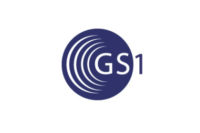Use of GS1 standards reduces both supply chain disruptions and time-to-shelf by an average of two to six weeks.
For a processor to succeed, it must move its product through the supply chain to the end customer, be it a consumer, operator or another food processor or manufacturer. The more accurate and efficient the supply chain, the better the processor services the needs of both the end customer and trading partners. For accuracy and efficiency, information is a vital element. That is one reason why processors, manufacturers, brokers, distributors, retailers, operators, transporters, customs organizations, hardware and software developers, local and international regulatory authorities and more have banned together as members of GS1 (see www.gs1.org).
GS1’s mission is to streamline the global supply chain. To accomplish this, it brings together companies and industry groups representing all parts of the supply chain. While member organizations may have conflicting business interests, working together to create standards, which make the supply chain faster, more effective, less complex and less costly, benefits all. GS1 provides the standards for the creation and exchange of supply chain information.
Processor benefits
GS1 and others have documented how reduced supply chain disruptions result in significant efficiencies in logistics, accounting, inventory management and customer service. Studies by Accenture and Cap Gemini have documented some of the benefits for food processors, for example, the reduction of time-to-shelf by an average of two to six weeks, improvements in order and item administration by 67 percent and the reduction of item data issues in the sales process by an average of 25 to 55 percent. A 2011 IBM study, Make your supply chain more efficient by using GS1 Global Standards, available on GS1’s website, states, “Companies that have implemented standards have exhibited higher performance results compared to those that have not done so.” For instance, those that have implemented Serial Shipping Container Code (SSSC) on a higher level have reduced their raw material level by as much as 51 percent and out of stocks by up to 32 percent.
GS1 offers a variety of standards and services that can benefit food processors. For example, GS1 assigns each company a unique manufacturer’s code plus defined standards on how to use that code with a product specific number the manufacturer controls to create a universal product code (UPC). That number is then used across the supply chain to indicate a specific product.
GS1 also has defined a series of other codes and standards to serve the supply chain:
- Global Trade Item Numbers (GTINs) identify trade items, which are products or services—from raw materials through to end-user products—that may be priced, ordered or invoiced at any point in any supply chain.
- Global Location Numbers (GLNs) identify locations and legal entities related to the supply chain. Locations can include stores, manufacturing centers, warehouses, broker’s offices, sales offices, corporate headquarters, distribution centers, vending machines, postal addresses, dock doors, customers, regions, merchant marine ships and more.
- Serial Shipping Container Codes (SSCCs) are used to identify logistics units such as cases, cartons, pallets or air cargo containers of trade items as they travel through shipping and receiving. When used in conjunction with electronic business transactions, an SSCC acts as a license plate, identifying the contents of the logistics unit.
Labels and more
A key part of managing the supply chain is identifying the various objects moving through it. End items, cases, totes, pallets and other logistic units are typically identified with labels, bar codes and RFID tags, which GS1 collectively calls data carriers or logistics labels. The core information on logistics labels should be represented both in machine (bar code) and human readable form. Other information may be printed on the label in human readable form only. GS1 provides standards for a variety of logistics labels based upon the data that must be distributed and their use in the supply chain.
Headquartered in Salinas Valley, CA, Growers Express, a farmer-owned integrated grower, packer and shipper, is one of the nation’s largest suppliers of fresh vegetables, with multiple brands that include Green Giant Fresh. It has adopted GS1 labeling from harvest to the retailer. “We moved quickly because we recognized that internal efficiencies would be gained, thereby improving our operations overall,” states Jamie Strachan, CEO of Growers Express. “We are committed to food safety at all levels, and the internal improvements also drove us to be first in the pool.”
Defining your products
Supply chain partners need information about products beyond price and description. They also need to know about classification (frozen, fresh, etc.), brand name, gross and net weight, packaging materials and package measurements at the unit, case and pallet level. GS1 calls this type of information Trade Item Data and has established rules for the global, unambiguous definition of nominal measurement attributes of products. It also publishes a list of mandatory data including description information such as abbreviations for units of measure, package type, can, box, roll, tub, etc.
All members of the supply chain need access to Trade Item Data and must be updated whenever something changes. This process is provided by a Global Data Synchronization Network (GDSN), also known as data pools. Electronic catalogues of standardized Trade Item Data, these data pools serve as a source and/or a recipient of master data. Data pools can be run by a GS1 member organization or independent company.
With a GDSN, the processor publishes the data to the data pool. Trading partners, with the processor’s approval, subscribe to the trade item data specific to the processor’s products. Trading partners then have access to the data, and if the processor changes any part of it, the trading partners receive notification of the changes and can retrieve the updated information. This process ensures security of the trade item data while allowing the complete supply chain to have the same information.
Data accuracy is essential to a successful data synchronization program since incorrect or improperly classified data creates problems, delays and costs in the supply chain. ITradeNetwork (www.itradenetwork.com) or ITN provides on-demand supply chain management and intelligence solutions to food industry processors, distributors, operators and retailers.
One ITN customer is BiRite, a full-line foodservice distributor headquartered in Brisbane, CA. Regarding his company’s decision to add GDSN, Dennis Collins, COO at BiRite, says, “The motivation was accessing a more complete picture of the products we stock. Our customers ask many questions on a daily basis regarding ingredients, nutritionals, packaging, shelf life, etc. This information has historically been difficult to access in a complete way and even more difficult to stay current. Easy access to the data will benefit our customers as well as our purchasing and sales and marketing teams.”
BiRite is currently revamping its website to make much of the GDSN product information accessible to customers. It is also working on the delivery of the content to its sales force via laptop, tablet and smart phone applications. “It is important to understand all the ways you can use the data and have a plan to be able to deliver the data in an appropriate way to the various consumers of the information,” Collins explains. “This will generally be accomplished by ensuring that all stakeholders within the company are involved in the planning and design of the company’s GDSN initiative. I would recommend a planning committee that holds regular meetings with their GDSN partner to ensure the project moves forward. This is a project that requires focus and time commitment to keep it on track. Often day-to-day business can get in the way of initiatives such as GDSN, leading to a slippage in the time line for implementation, or even suspension of the project due to other issues being given a higher priority.”
Food safety and recalls
To assist the industry with farm-to-fork traceability, GS1 has created the Global Traceability Standard (GTS). GTS facilitates the collaboration among supply chain partners’ traceability efforts on a global scale all along the supply chain, regardless of how many companies are involved or what enabling technologies (bar codes, RFID, EDI, Internet, etc.) are used. Key to GTS is the adoption of GS1 naming and coding standards so each member of the supply chain can easily communicate with its upstream and downstream partners. GS1 also offers the Rapid Recall Exchange online service that enables suppliers to communicate to their supply chain 24/7, alerting partners if there is a product recall or withdrawal. A contributor to the design of the Rapid Recall Exchange and an early adopter is Sun-Maid.
According to John Slinkard, Sun-Maid vice president of supply chain, “Food safety has always been a priority for Sun-Maid. We haven’t had a recall, but we have always had a recall and withdrawal plan.” Sun-Maid uses GS1 label standards to identify product across the supply chain. The process starts with Sun-Maid’s growers delivering the raisins in bins with EPC-enabled RFID tags. The raisins are cleaned, sorted, processed and packaged in cartons, boxes or bags with Global Trade Item Numbers (GTINs). The GTINs, encoded in bar codes, uniquely identify each item. The individual items are packed together in cases with ITF-14 bar codes and on pallets with GS1-compliant license plate bar codes.
“Rapid Recall eliminates any confusion about products being recalled or withdrawn,” says Mary Terjeson, Sun-Maid vice president of trade funds & sales administration. “It gives us a standard format for creating a notification so that all impacted retailers get the information they need to take action. I don’t miss critical information that should be included. I can also attach images, handling and reimbursement instructions, and other documents to clarify what products should be withdrawn.
“With Rapid Recall Exchange, we will know which retailers receive and open our notification, and when. They can come back to us with questions and advise us of their actions,” adds Terjeson.
“Our plan is to never have to use Rapid Recall Exchange. But, if we ever do, we’re confident it will help us be successful,” says Slinkard.
As global supply chains become increasingly complex, it is critical that data not only be accurate but also available on demand. The more accurate and efficient the supply chain, the better processors can meet the needs of their customers.




